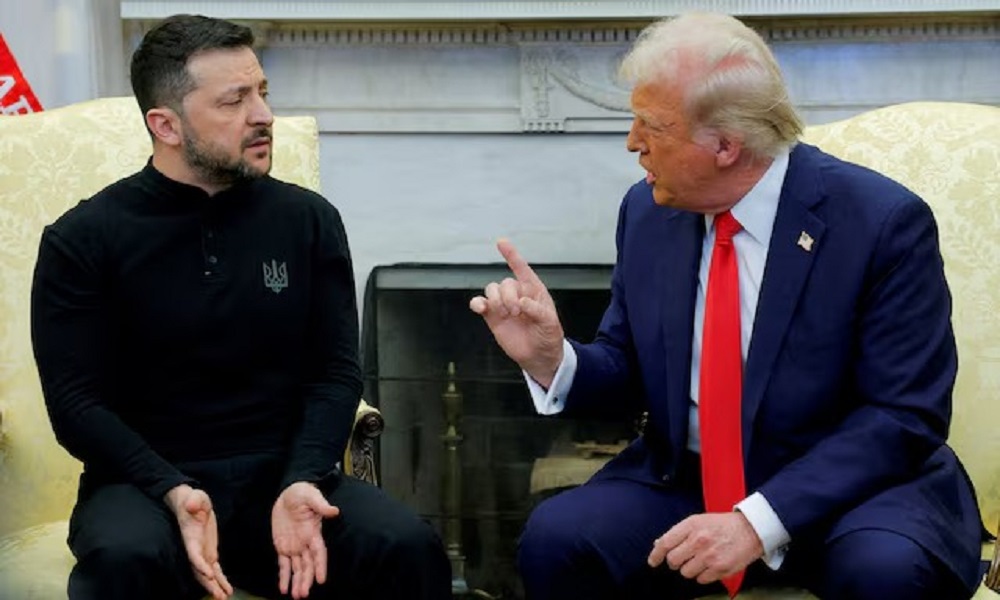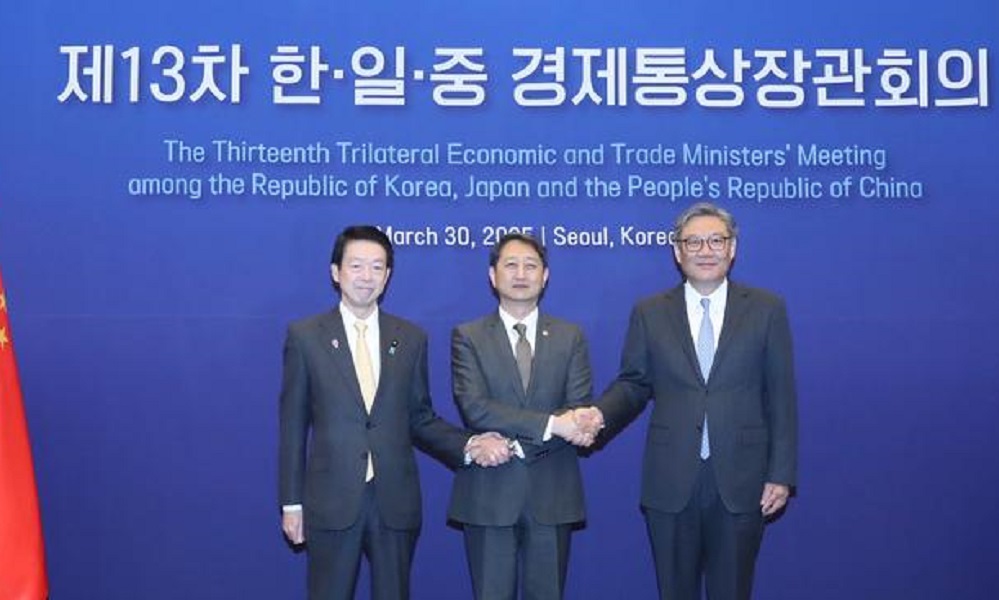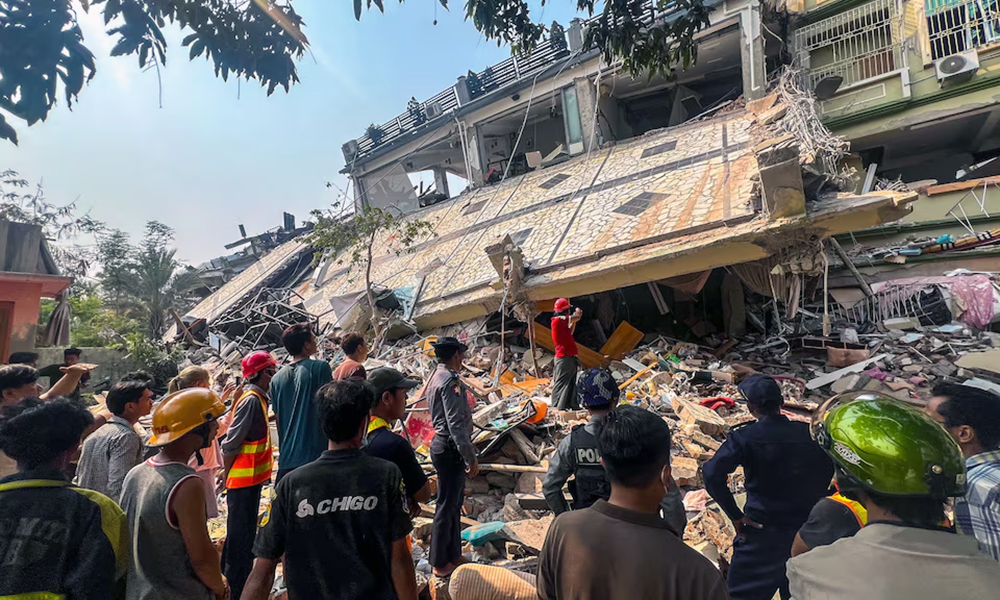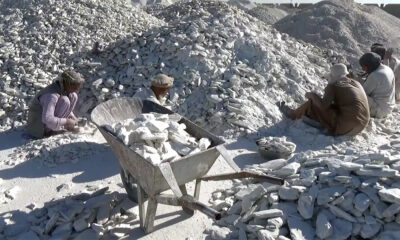World
Thousands of federal agents diverted to Trump immigration crackdown
Trump’s hardline approach to deporting immigrants has intensified America’s already-stark partisan divide

Federal agents who usually hunt down child abusers are now cracking down on immigrants who live in the U.S. illegally, Reuters reported.
Homeland Security investigators who specialize in money laundering are raiding restaurants and other small businesses looking for immigrants who aren’t authorized to work and agents who pursue drug traffickers and tax fraud are being reassigned to enforce immigration law.
As U.S. President Donald Trump pledges to deport “millions and millions” of “criminal aliens,” thousands of federal law enforcement officials from multiple agencies are being enlisted to take on new work as immigration enforcers, pulling crime-fighting resources away on other areas — from drug trafficking and terrorism to sexual abuse and fraud, Reuters reported Sunday.
This account of Trump’s push to reorganize federal law enforcement – the most significant since the September 11, 2001, terrorist attacks – is based on interviews with more than 20 current and former federal agents, attorneys and other federal officials.
Most had first-hand knowledge of the changes. Nearly all spoke on the condition of anonymity because they were not authorized to discuss their work.
“I do not recall ever seeing this wide a spectrum of federal government resources all being turned toward immigration enforcement,” said Theresa Cardinal Brown, a former Homeland Security official who has served in both Republican and Democratic administrations.
“When you’re telling agencies to stop what you’ve been doing and do this now, whatever else they were doing takes a back seat.”
In response to questions from Reuters, Homeland Security Assistant Secretary Tricia McLaughlin said the U.S. government is “mobilizing federal and state law enforcement to find, arrest, and deport illegal aliens.”
The Federal Bureau of Investigation declined to respond to questions about its staffing.
In a statement, the FBI said it is “protecting the U.S. from many threats.”
The White House did not respond to requests for comment.
The Trump administration has offered no comprehensive accounting of the revamp. But it echoes the aftermath of the 2001 attacks, when Congress created the Department of Homeland Security that pulled together 169,000 federal employees from other agencies and refocused the FBI on battling terrorism.
Trump’s hardline approach to deporting immigrants has intensified America’s already-stark partisan divide.
The U.S. Senate’s No. 2 Democrat, Dick Durbin, described the crackdown as a “wasteful, misguided diversion of resources.”
In a statement to Reuters, he said it was “making America less safe” by drawing agents and officials away from fighting corporate fraud, terrorism, child sexual exploitation and other crimes.
U.S. Deputy Attorney General Todd Blanche, in an interview with Reuters, denied the changes across federal law enforcement were hindering other important criminal investigations.
“I completely reject the idea that because we’re prioritizing immigration that we are not simultaneously full-force going after violent crime.”
He said the crackdown was warranted. “President Trump views what has happened over the last couple years truly as an invasion, so that’s how we’re trying to remedy that.”
On January 20, his first day back in office, Trump signed an executive order, directing federal agencies to team up to fight “an invasion” of illegal immigrants. He cast the nation’s estimated 11 million immigrants in the U.S. illegally as the driving factor behind crime, gang violence and drug trafficking – assertions not supported by government statistics, – and accused immigrants of draining U.S. government resources and depriving citizens of jobs.
Almost immediately, federal law enforcement started posting photos of the crackdown to social media: agents wore body armor and jackets emblazoned with names of multiple agencies – including the FBI, Drug Enforcement Administration, and the Bureau of Alcohol, Tobacco, Firearms and Explosives, known as ATF – during raids on immigrants without proper legal status.
Before this year, ATF had played almost no role in immigration enforcement. It typically investigated firearms offenses, bombings, arson and illicit shipments of alcohol and tobacco.
But since Trump’s inauguration, about 80% of its roughly 2,500 agents have been ordered to take on at least some immigration enforcement tasks, two officials familiar with ATF’s operations said. The ATF agents are being used largely as “fugitive hunters” to find migrants living in the U.S. illegally, one of the officials said.
The DEA, whose roughly 10,000 staff have led the nation’s efforts to battle drug cartels, has shifted about a quarter of its work to immigration operations, said a former official briefed by current DEA leaders on the changes. Two other former officials described the commitment as “substantial” but did not know precisely how much work shifted.
Many of the reassigned federal officials have had little training or experience in immigration law, the sources said.
The results, so far, are mixed: the number of migrants seeking to cross the southern U.S. border in February was the lowest in decades and the number of people detained over immigration violations has surged. That hasn’t yet led to an increase in deportations, but experts expect a jump in those numbers in coming months.
World
Trump says Zelenskiy wants to back out of critical minerals deal

U.S. President Donald Trump said on Sunday Ukrainian President Volodymyr Zelenskiy wants to back out of a critical minerals deal, warning the Ukrainian leader would face big problems if he did.
“He’s trying to back out of the rare earth deal and if he does that he’s got some problems, big, big problems,” Trump told reporters.
“He wants to be a member of NATO, but he’s never going to be a member of NATO. He understands that.”
(Reuters)
World
South Korea, China, Japan seek regional trade amid Trump tariffs

South Korea, China and Japan held their first economic dialogue in five years on Sunday, seeking to facilitate regional trade as the three Asian export powers brace from U.S. President Donald Trump’s tariffs.
The countries’ three trade ministers agreed to “closely cooperate for a comprehensive and high-level” talks on a South Korea-Japan-China free trade agreement deal to promote “regional and global trade”, according to a statement released after the meeting.
“It is necessary to strengthen the implementation of RCEP, in which all three countries have participated, and to create a framework for expanding trade cooperation among the three countries through Korea-China-Japan FTA negotiations,” said South Korean Trade Minister Ahn Duk-geun, referring to the Regional Comprehensive Economic Partnership.
The ministers met ahead of Trump’s announcement on Wednesday of more tariffs in what he calls “liberation day”, as he upends Washington’s trading partnerships.
Seoul, Beijing and Tokyo are major U.S. major trading partners, although they have been at loggerheads among themselves over issues including territorial disputes and Japan’s release of wastewater from the wrecked Fukushima nuclear power plant.
They have not made substantial progress on a trilateral free-trade deal since starting talks in 2012.
RCEP, which went into force in 2022, is a trade framework among 15 Asia-Pacific countries aimed at lowering trade barriers.
Trump announced 25% import tariffs on cars and auto parts last week, a move that may hurt companies, especially Asian automakers, which are among the largest vehicle exporters to the U.S.
After Mexico, South Korea is the world’s largest exporter of vehicles to the United States, followed by Japan, according to data from S&P.
The ministers agreed to hold their next ministerial meeting in Japan.
(Reuters)
World
Myanmar quake death toll hits 1,700 as aid scramble intensifies
India, China and Thailand are among Myanmar’s neighbours that have sent relief materials and teams, along with aid and personnel from Malaysia, Singapore and Russia.

The toll from Myanmar’s earthquake continued to rise on Sunday, as foreign rescue teams and aid rushed into the impoverished country, where hospitals were overwhelmed and some communities scrambled to mount rescue efforts with limited resources.
The 7.7-magnitude quake, one of Myanmar’s strongest in a century, jolted the war-torn Southeast Asian nation on Friday, leaving around 1,700 people dead, 3,400 injured and over 300 missing as of Sunday, the military government said.
The junta chief, Senior General Min Aung Hlaing, warned that the number of fatalities could go up and his administration faced a challenging situation, state media reported, three days after he made a rare call for international assistance.
India, China and Thailand are among Myanmar’s neighbours that have sent relief materials and teams, along with aid and personnel from Malaysia, Singapore and Russia.
“The destruction has been extensive, and humanitarian needs are growing by the hour,” the International Federation of Red Cross and Red Crescent Societies said in a statement.
“With temperatures rising and the monsoon season approaching in just weeks, there is an urgent need to stabilise affected communities before secondary crises emerge.”
The devastation has piled more misery on Myanmar, already in chaos from a civil war that grew out of a nationwide uprising after a 2021 military coup ousted the elected government of Nobel Peace Prize laureate Aung San Suu Kyi.
Critical infrastructure – including bridges, highways, airports and railways – across the country of 55 million lie damaged, slowing humanitarian efforts while the conflict that has battered the economy, displaced over 3.5 million people and debilitated the health system rages on.
In some areas near the epicentre, residents told Reuters that government assistance was scarce, leaving people to fend for themselves.
“It is necessary to restore the transportation routes as soon as possible,” Min Aung Hlaing told officials on Saturday, according to state media. “It is necessary to fix the railways and also reopen the airports so that rescue operations would be more effective.”
The U.S. Geological Service’s predictive modelling estimated Myanmar’s death toll could top 10,000 and losses could exceed the country’s annual economic output.
Hospitals in parts of central and northwestern Myanmar, including the second-biggest city, Mandalay, and the capital Naypyitaw, were struggling to cope with an influx of injured people, the U.N. Office for the Coordination of Humanitarian Affairs said late on Saturday.
The quake also shook parts of neighbouring Thailand, bringing down an under-construction skyscraper and killing 18 people across the capital, according to Thai authorities.
At least 76 people remained trapped under the debris of the collapsed building, where rescue operations continued for a third day, using drones and sniffer dogs to hunt for survivors.
The opposition National Unity Government, which includes remnants of the previous administration, said anti-junta militias under its command would pause all offensive military actions for two weeks from Sunday.
The devastation in some areas of upper Myanmar, such as the town of Sagaing near the quake’s epicentre, was extensive, said resident Han Zin.
“What we are seeing here is widespread destruction – many buildings have collapsed into the ground,” he said by phone, adding that much of the town had been without electricity since the disaster hit and drinking water was running out.
“We have received no aid, and there are no rescue workers in sight.”
Sections of a major bridge connecting Sagaing to nearby Mandalay collapsed, satellite imagery showed, with spans of the colonial-era structure submerged in the Irrawaddy river.
“With bridges destroyed, even aid from Mandalay is struggling to get through,” Sagaing Federal Unit Hluttaw, a political association linked to the NUG, said on Facebook.
“Food and medicine are unavailable, and the rising number of casualties is overwhelming the small local hospital, which lacks the capacity to treat all the patients.”
In Mandalay, scores of people were feared trapped under collapsed buildings and most could not be reached or pulled out without heavy machinery, two humanitarian workers and two residents said.
“My teams in Mandalay are using work gloves, ropes and basic kits to dig and retrieve people,” said one of the humanitarian workers. Reuters is not naming them because of security concerns.
“There are countless trapped and still missing. The death toll is impossible to count at the moment due to the number trapped and unidentified, if alive.”
A video filmed by a Mandalay resident on Saturday and shared with Reuters showed patients in beds, some attached to drips, on the grounds outside a 500-bed orthopaedic hospital in the city.
Public and private health care facilities in Mandalay, including the Mandalay General Hospital and parts of Mandalay Medical University, were damaged by the quake, according to the World Health Organization.
Russian and Indian rescue workers were heading to Mandalay, and multiple teams of Chinese, Thai and Singapore rescue personnel have also arrived in the country.
In Bangkok, at the site of the collapsed 33-storey building, rescuers surrounded by shattered concrete piles and twisted metal continued their efforts to rescue dozens of workers trapped under the rubble.
Teerasak Thongmo, a Thai police commander, said his team of policemen and rescue dogs were racing against time to locate survivors, struggling to move around metal debris and sharp edges on an unstable structure.
“Right now, our team is trying to find anyone that might still be alive. Within the first 72 hours, we have to try and save those still alive,” he said.
Near the rescue operations, relatives and friends of the missing and trapped construction workers waited for news. Some broke down.
“Ploy, Ploy, Ploy, my daughter, I’m here for you now!” one woman wailed, as she was hugged by two others. “Ploy, can you hear me calling out for you?”
-

 Latest News4 days ago
Latest News4 days agoAmnesty international urges Pakistan to halt Afghan deportations
-

 Latest News4 days ago
Latest News4 days agoAfghanistan-Iran-Europe railway corridor activated
-

 Business4 days ago
Business4 days agoAfghanistan ships first consignment to Europe via Khaf-Herat railway
-

 Business3 days ago
Business3 days ago36 mining contracts inked over the past year: Mines ministry
-

 Sport4 days ago
Sport4 days agoDe Kock fireworks see Kolkata thrash Rajasthan in IPL
-

 Latest News3 days ago
Latest News3 days agoDried fruit market in Herat booms ahead of Eid-al-Fitr
-

 Regional3 days ago
Regional3 days agoPowerful quake in Southeast Asia kills several, Myanmar declares state of emergency
-

 Latest News3 days ago
Latest News3 days agoUS may ask for military equipment left behind in Afghanistan: Trump
























